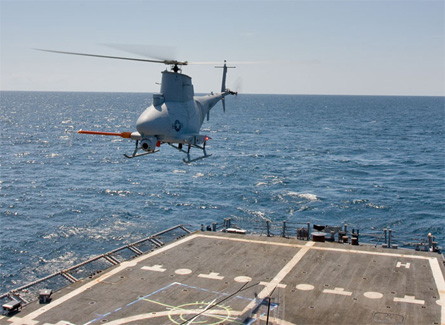Upon returning to flight on 10 October, the MQ-8B Fire Scout unmanned helicopter passed 1,000h of flight tests and will deploy for more testing with the US Navy and intelligence, surveillance and reconnaissance (ISR) work with the US Central Command in early 2011.
The vertical take-off and landing unmanned air vehicle, built by Northrop Grumman, was placed under operating restrictions by the navy after operators temporarily lost control of an aircraft on 2 August over restricted airspace near Washington, DC during a routine test flight.
The navy says it has identified the issue and corrected it, putting in place operating restrictions that prevent a repeat of the incident and installing software updates to correct the problems.
With the new operating procedures and software in place, the Fire Scout continued the flight test programme at NAS Patuxent River in Maryland, deployed for a military utility assessment on board the USS McInerney, and completed an "adverse conditions demonstration" that required the UAV to operate in extreme temperatures, high winds and sand. While deployed with the navy, Fire Scout operators detected, tracked and identified drug trafficking boats in the eastern Pacific, says Northrop.
|
|---|
© Northrop Grumman |
The Fire Scout is currently undergoing system development and demonstration flight testing to mature it for use aboard navy ships and is expected to begin its operational evaluation in early 2011, according to Northrop.
"We're looking forward to getting the system into the field where it can use its unique ISR and communications capabilities to support critical warfighter requirements," says George Vardoulakis, vice president for tactical unmanned systems for Northrop Grumman's aerospace sector.
Two UAVs are set to deploy on the USS Halyburton in early 2011 in the second "at-sea" assignment for the MQ-8B. A land-based, three-aircraft system will also deploy early next year with the US Central Command as part of the Pentagon's ISR Task Force.
Source: Flight International
























